Developing refined growth while maintaining sacrifice branches can be a tricky balancing act. If the sacrifice branches are reduced, the future branches become strong. If sacrifice branches grow freely, the future branches can become weak.
We covered this in a previous post that looked at how to decandle selected branches while letting the sacrifice branches grow (see “BDS#13: Balancing vigor” for details).
This year I wanted to learn how pines would respond to the cutback-decandling technique (see “Stimulating back buds on black pine” for details about the approach).
Here’s a six year-old black pine in early July.
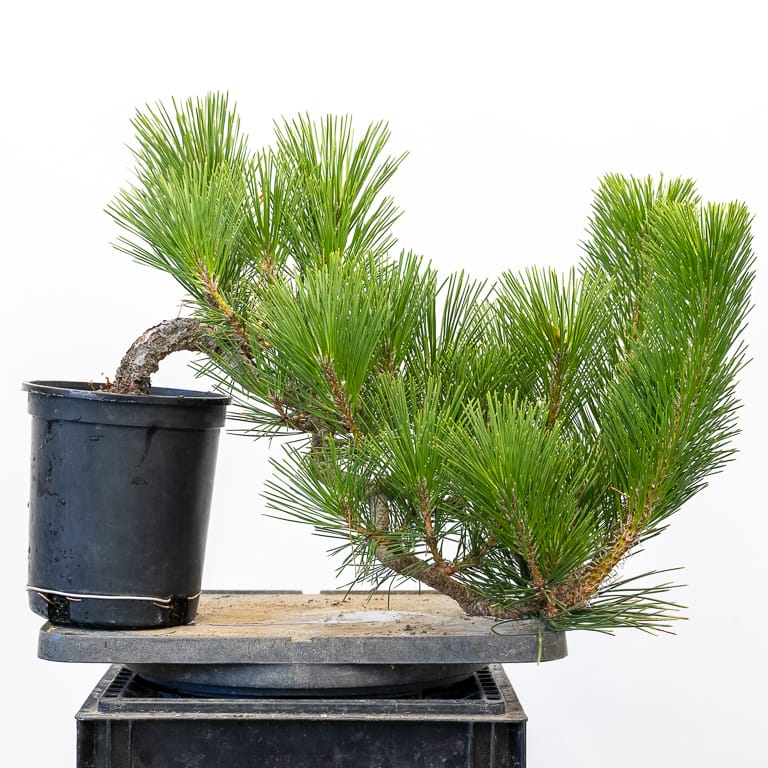
Six year-old black pine
And here’s what the tree looks like this week.
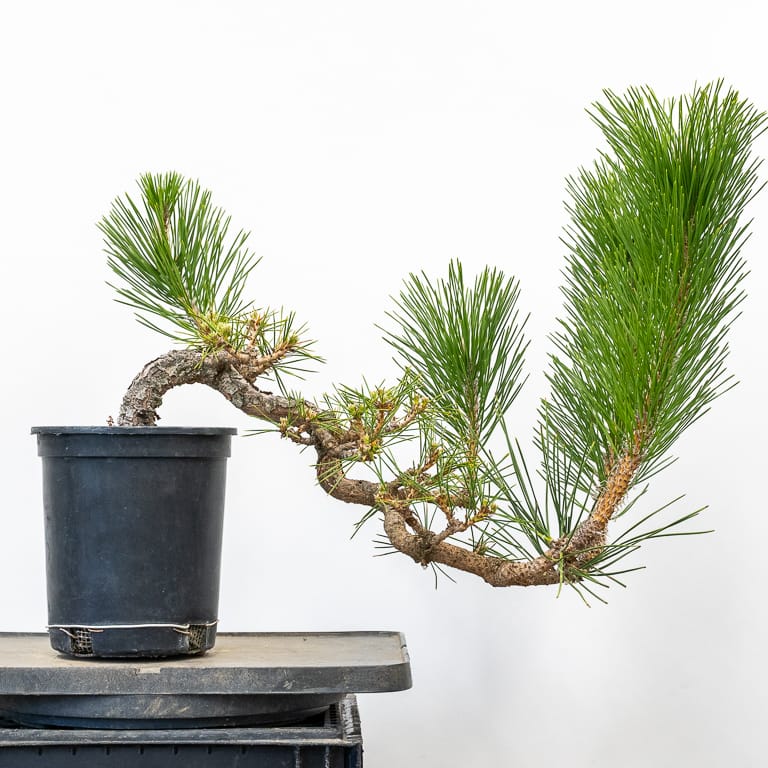
Cascade black pine – October, 2020
At a glance, the large sacrifice branches look unchanged, and the small interior branches grew very little. If you look closely, you can see that needle buds developed on most of the pruned branches.
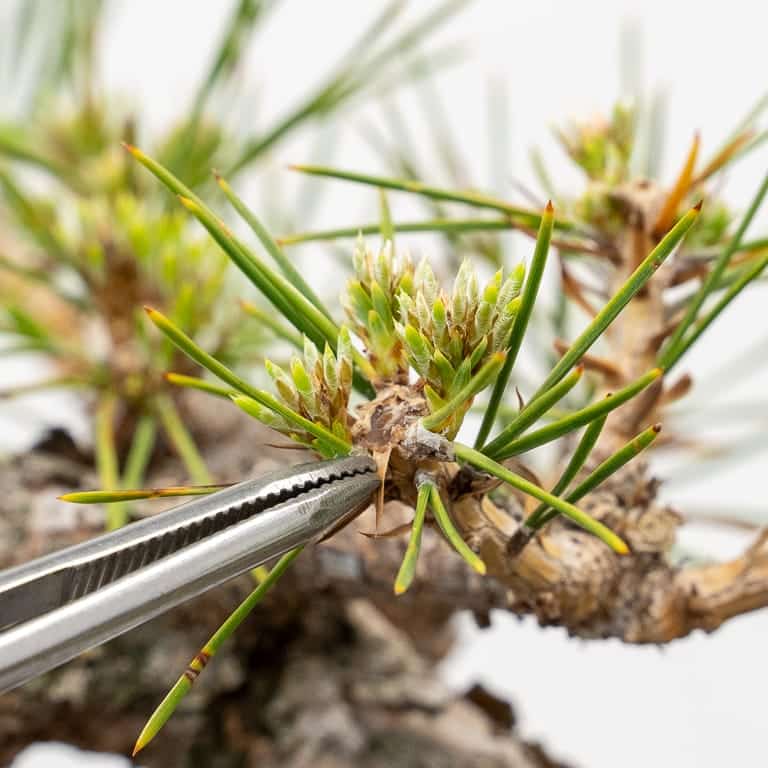
Needle buds growing on a strong branch
The weaker shoots produced buds that won’t open until next year.
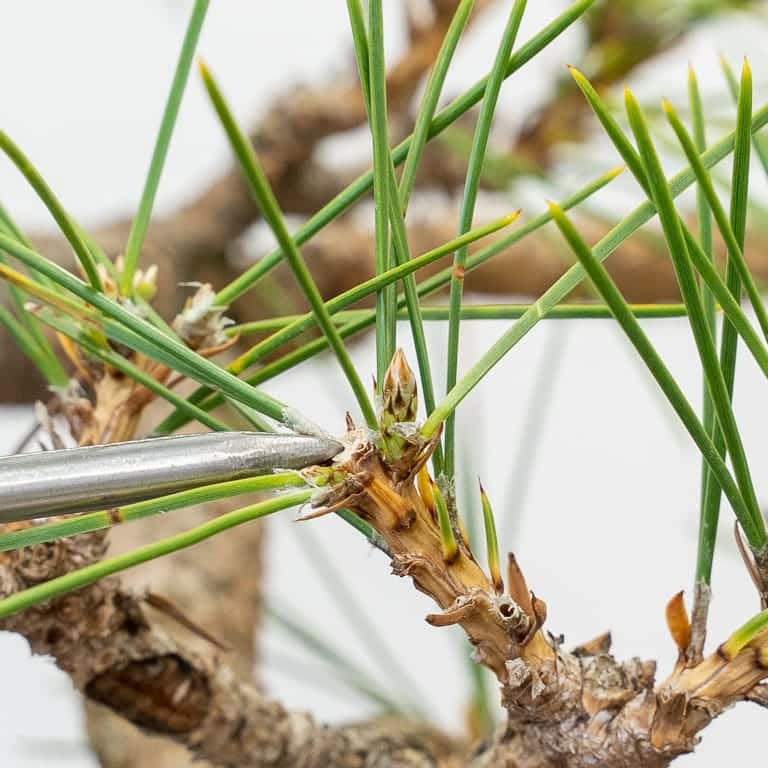
Needle bud that didn’t open
What’s the takeaway? Don’t expect needle buds to produce much mature growth when there are vigorous sacrifice branches on the tree. Here’s another example.
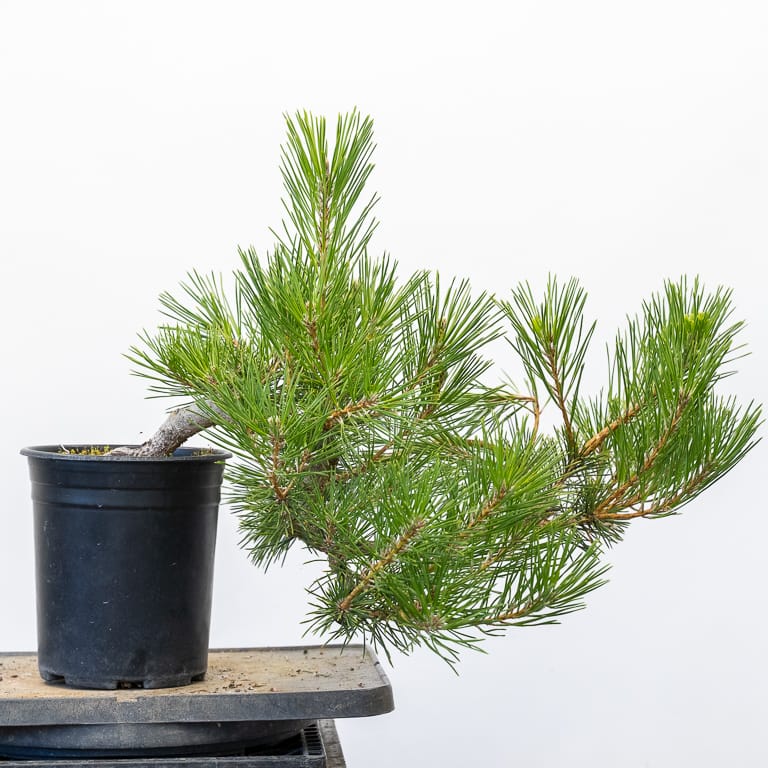
Six year-old black pine in July
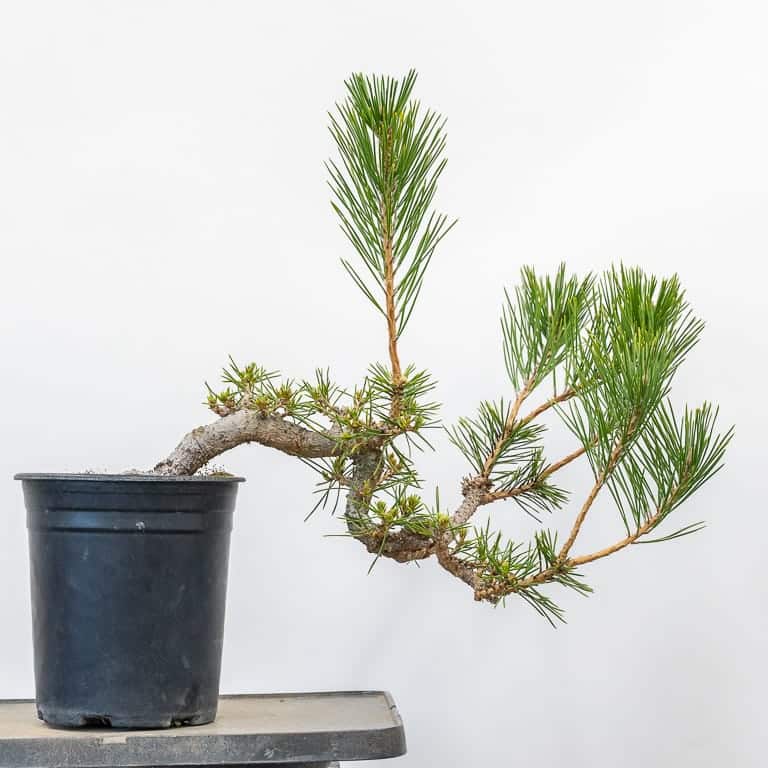
After cutback-decandling – October, 2020
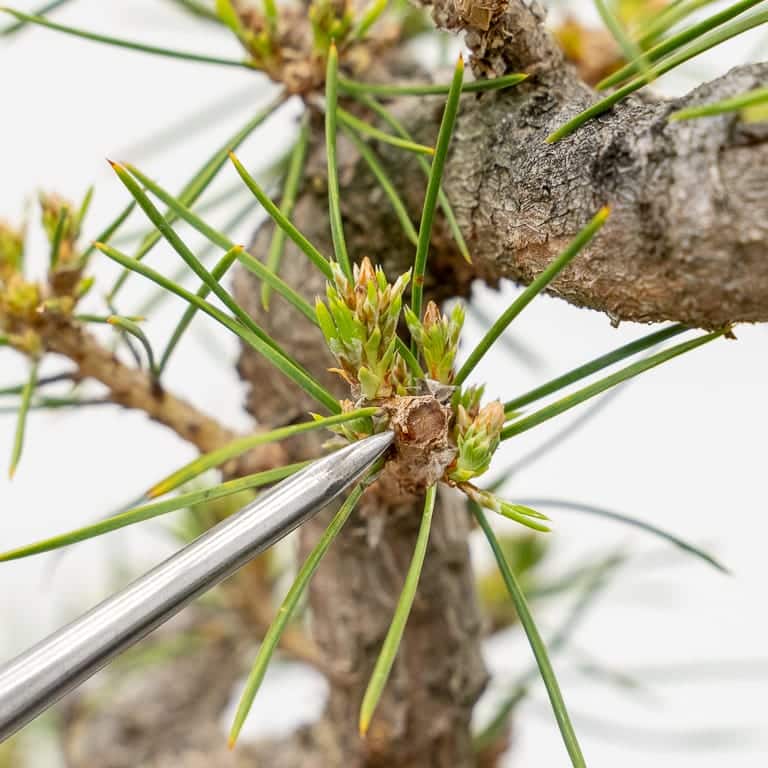
New growth on needle buds
To get a better sense of how I’d expect similar trees to respond to related techniques, here are two pines that were cutback-decandled, and one that was decandled according to standard approach.
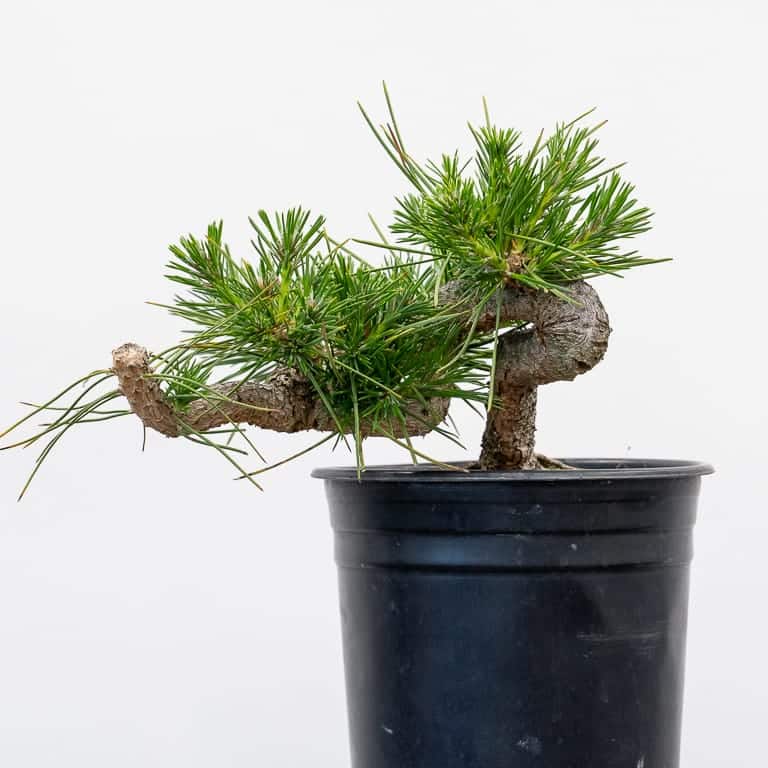
Five year-old pine after cutback-decandling – note that the sacrifice branch was removed
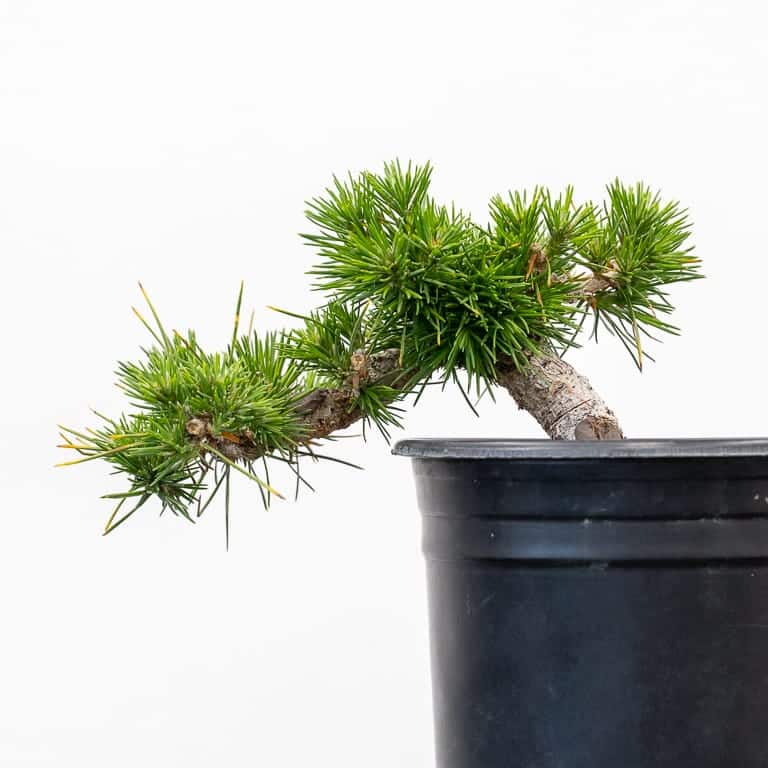
Another five year-old black pine after cutback-decandling
Both of these trees responded well to the approach of cutting back past the normal decandling point in an effort to stimulate needle buds. As long as there was no sacrifice branch on these trees, they had the resources to produce strong buds within a single growing season.
The final example is a young pine that was decandled as if it were a mature specimen. All of the spring growth was removed in July and the tree responded by producing adventitious buds.
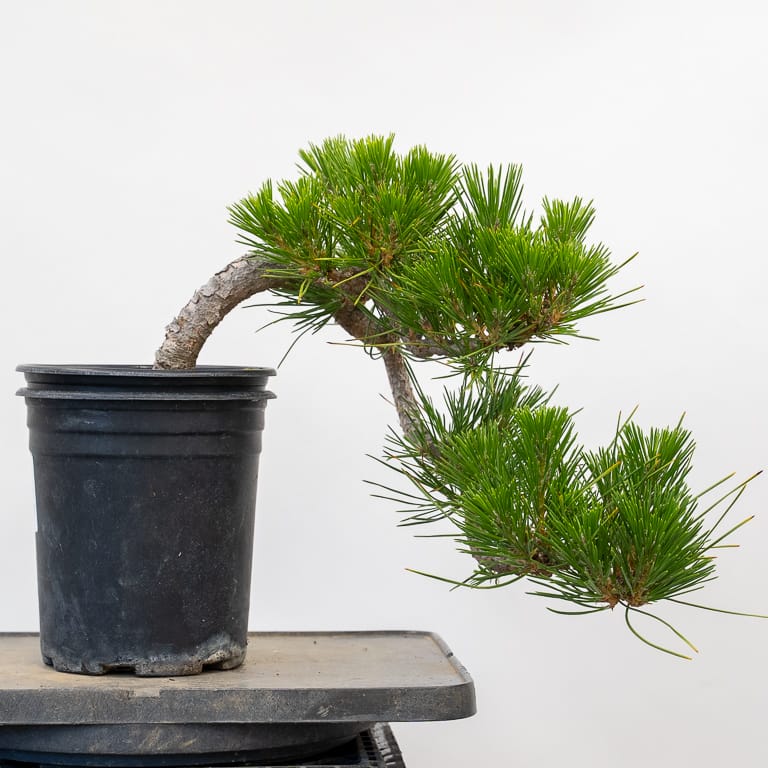
Summer growth on a five year-old black pine
The result of taking these diverse approaches is that I now have a better idea of what to do when I need shorter internodes on a young pine, and what to expect after taking action.
Looking for bonsai in Northern California?
I’ve put together a resource of bonsai professionals and vendors in Northern California. Some sell trees online, and others offer local pick-up.
If you’re looking for bonsai in the San Francisco Bay Area or beyond, check out the nurseries at the link below:
Northern California Bonsai Resources
Subscribe to Bonsai Tonight
New Posts Delivered Every Tuesday and Friday
Robert Potts says
Thanks for that vendor list Jonas!
Michael M says
Jonas,
Thanks for the detail photos. In the third and forth photos you show the short growth that came out when vigorous growth was left on. Those short candles look like they are adventitious buds that haven’t grown much. Aren’t needle buds initiated between a needle pair? Not that it matters much, either type will push into expanding candles next spring.
Have you got examples of growth that happens if you cut below the usual decandle spot?
Thanks
Michael
Jonas Dupuich says
Hi Michael! That’s exactly right about how needle buds emerge. It’s not clear from the third photo, but you can see the needles on the sides of the unopened bud in the fourth photo. Just about every one of the cuts on all but the last tree in the post were made below the normal decandling spot.
Michael M says
Hi Jonas,
Thanks for the clarification! I can see that now. The next greatest step forward in black pine development since the caterpillar damage of 60 years ago!
Thanks
Jonas Dupuich says
Ha – thanks Michael!
Josh Bentley says
Very cool. Have you done any experimentation with needle pulling on the sacrifice branches? I’m curious if that would reduce their vigor and force the other branches to flush without them actually being cut back or off.
The telperion gents talk about this kind of technique for young pines, but they have not produced this kind of curated content to help me understand what they mean exactly.
Jonas Dupuich says
Hi Josh – great question. I’ve pulled needles on sacrifice branches a lot and have yet to see the response I’m looking for on the lower branches. In general, if we reduce foliage on any tree, the tree is going to try and replace that foliage. The more we remove, the harder the tree will try to replace it. Depending on which foliage is removed, we can expect different responses in terms of where we see new growth develop.
After working on different approaches to decandling, I remain curious about what might be possible on the more subtle end of the spectrum. Will have to keep experimenting!
Joel Otteman says
Thank you for the great insight.
Jonas Dupuich says
Thanks, Joel!